Overview
At Epic Brokers, we’re dedicated to providing top-notch insurance brokerage services to our clients nationwide. One crucial aspect of our business strategy involves optimizing our email marketing efforts to enhance customer engagement and streamline internal processes. In this blog post, we’ll take you through our journey of managing nationwide marketing strategy and the steps we took to overcome challenges and achieve greater efficiency.
A Year in Comms
I never expected my 6-month contract at EPIC Brokers to extend to a whole year from the onset. Initially, I was brought on board to help offset some knowledge gaps between Salesforce Marketing Cloud and Pardot. My role would quickly expand to include management of all QA processes, email deployments, and journey builds, in addition to ad hoc projects that pop up over the course of a working week.
EPIC was a highly established Salesforce partner who had recently expanded their Pardot platform to include Salesforce Marketing Cloud. The initial need was just to help with the transition, however my expertise would become paramount over the course of that particular year in omnichannel marketing. Aside from email deployments, email design from creative draft, and testing, I’d also taken up SME responsibilities like helping to troubleshoot data extensions, request/set up Sender Profiles, and produce Salesforce reports on outgoing email communications.
Managed Solutions
During my tenure with EPIC, there were some standout initiatives and campaigns that helped encompass the experience.
Vendor Management
As Email Marketing Manager of a Salesforce Marketing Cloud and Pardot implementation, I relied on an off-shore vendor for the most complicated tasks. I met weekly with our vendor partner to prioritize and discuss opportunities, challenges, and advanced personalization.
Sender Profiles Management
Helped to implement new protocol for requesting Sender Profiles. Streamlined the process for Sender Profile creation and verification in an industry with multiple necessary Sender Profiles.
Campaign Capabilities in SFMC
Transitioning from Pardot to SFMC was seamless, thanks to valuable resources and guidance available. There were some knowledge gaps to walkthrough though, one example is communicating how Marketing Cloud handles campaigns differently than almost every other marketing platform – brokers weren’t too happy about that in the tracking department.
Litmus Tracker Implementation
Adopting Litmus Tracker provided detailed insights into email deliveries and engagement, improving tracking accuracy, but most importantly it allowed us to test across various screen resolutions. I also particularly liked the fact that I could add additional tagging to Litmus emails for advanced tracking capabilities.
Distributed Marketing Equivalent
Leveraging SFMC’s Distributed Marketing feature ensured continuity in our email marketing efforts. Adoption wasn’t easy though. We had almost a dozen capabilities calls and meetings to ensure that SFMC and Pardot would be in alignment with what brokers could do in each platform. Ultimately, we settled on SFMC’s Distributed Marketing as it was as close to Send Engage as we could get. Brokers needed multiple calls, walkthroughs, and separate Teams messages to learn to leverage it, but once they got it we were all good.

The Great Transition
Over the span of a year, I played a pivotal role in guiding EPIC Brokers through a significant transformation in their email marketing strategy. This involved transitioning from utilizing Pardot’s Send Engage feature to leveraging Marketing Cloud’s Distributed Marketing platform. This transition was crucial for facilitating personalized, one-to-one communication with their clients through email campaigns.
Send Engage to Distributed Marketing
In the insurance industry, empowering brokers and salespeople with the tools they need for success is paramount. Previously, our sales team had gained proficiency in utilizing Pardot Engagements, leveraging Pardot reporting within Salesforce, and harnessing Pardot’s capability to enable email customization through Salesforce Send Engage. I created and tested templates during the transition between platforms as well as set up several knowledge training sessions with territory sales managers to discuss the transition. This included discovering Sales’ pain points with the current workflow and ensuring they knew how to access everything moving forward into the new Marketing Cloud based workflow.
I also re-coded Pardot’s email templates within Marketing Cloud, set up all AMPscript dependent fields, associated Journeys, and managed the implementation for brokers.
Knowledge Gaps
As a subject matter expert, I’d often receive requests for Permissions changes, access edits, etc. that I would run through my own internal process of deciding who should have access to what. Managing permissions aside, I enjoyed serving as a resource for brokers and stakeholders as we worked out the kinks within the new Marketing Cloud implementation. I’d help ensure data was available via Data Studio, manage all machine-learning initiatives in Einstein, and run reports on email metrics daily to makes sure our reputation stayed spotless across email service providers. I enjoyed my people-facing responsibilities the most though, like creating easy to follow PDFs, quarterly reports, or walkthrough videos for new processes.

Creating Processes with Wrike
Over the course of working with EPIC, I got the opportunity to utilize Wrike as a project management tool. I must say, the Wrike team is spot-on with their platform and its got all the right bells and whistles for managing omnichannel communications projects. In my career, I’ve worked with all of the big project management tools: Asana, Workfront, the Microsoft suite, Monday, and Jira, just to name a few. Of all the options, I’d consider Wrike at the forefront due to its minimal latency in real-time collaboration and edits. I’m a stickler for being able to see real-time to determine what’s going on in a document, project, timeline, etc. Wrike does that just right! In addition, the interface is just really smooth and extremely customizable. All that being said, I helped the EPIC utilization team to standardize Wrike as our platform of choice for all interactions related to channel deployments.
Using Wrike didn’t come first-nature to a lot of people. In the cross-functional nature of marketing ops, all apps don’t lend themselves equally to adoption. I’d often serve as communications channel traffic cop by re-routing all requests to Wrike, requesting edits in Wrike, generally helping to cement Wrike as our platform for all comms. While outside of my purview, it helps the business when we actually use and leverage apps that are being paid for to the point that there are adoption audits for each app at some companies. All marketing requests would come through Wrike with a Word based creative doc. All tests would be deployed, shared to Wrike for approval within Wrike. I was instrumental in revising EPIC’s testing plan across several renditions and process flows within Wrike until we found a process that felt right.
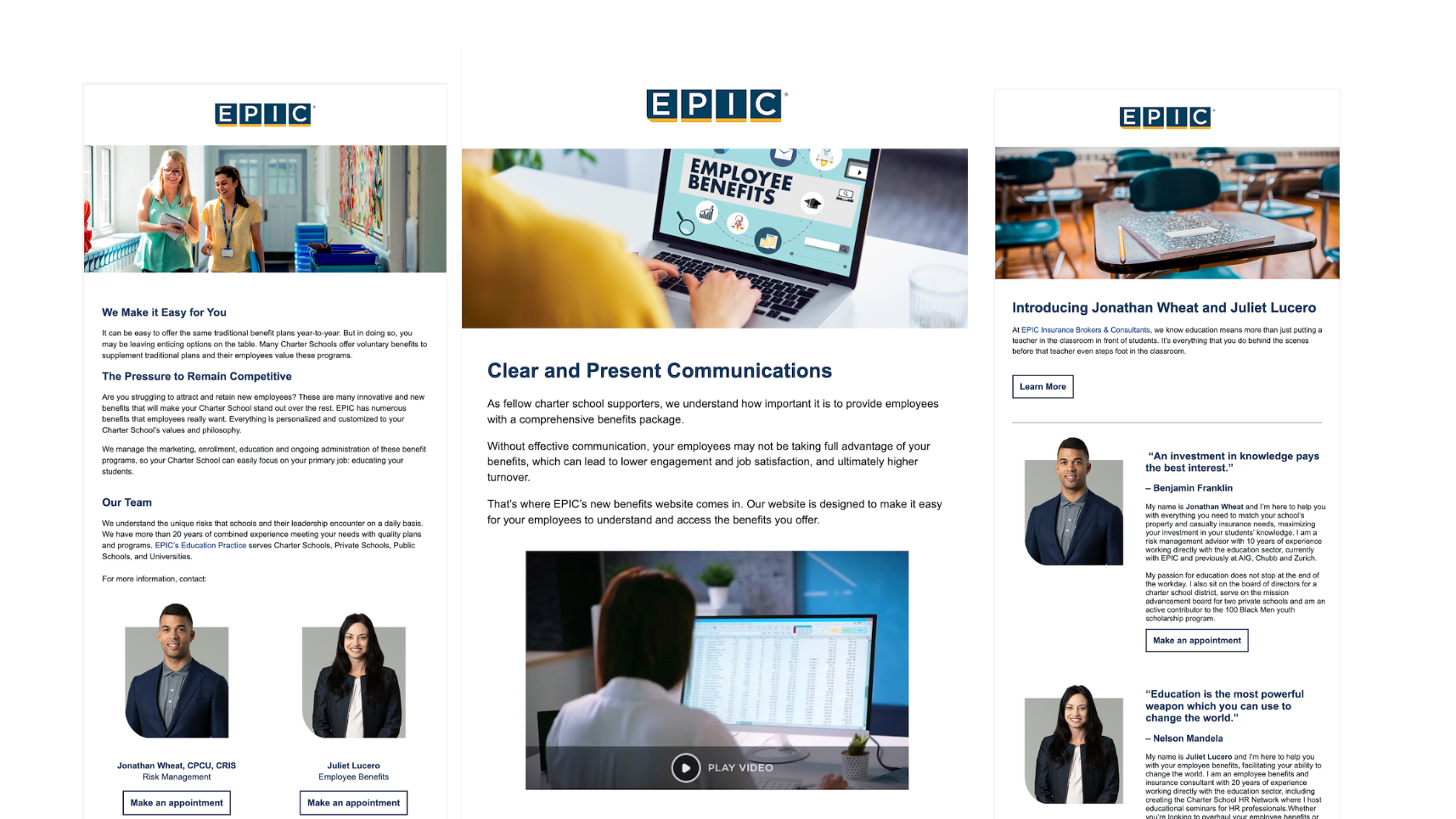
Conclusion
EPIC’s proactive approach to Producer email capability, thoughtful onboarding, and omnichannel communications personalization demonstrate a commitment to delivering exceptional customer experiences. These digital initiatives will no-less continue to drive business growth with targeted digital marketing efforts.
In my career, I’ve worked other contracts for insurance companies, but none were as enriching as those during my time at EPIC. While not an agency, EPIC’s workload and month-to-month expectations kept me on my feet as they were full of surprises! I’ve helped onboard and push leads through webinar journeys as well as help support brokers as we all sought to find normalcy post-pandemic.
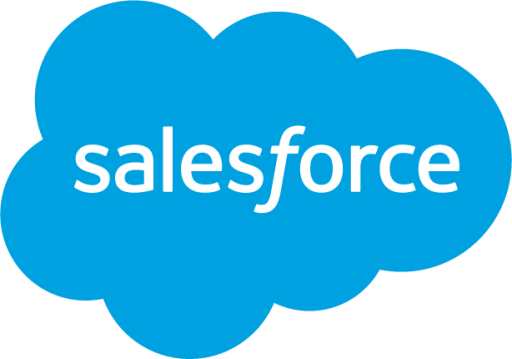
Some data lived on Salesforce for running reports, building dashboards, or cross referencing data.
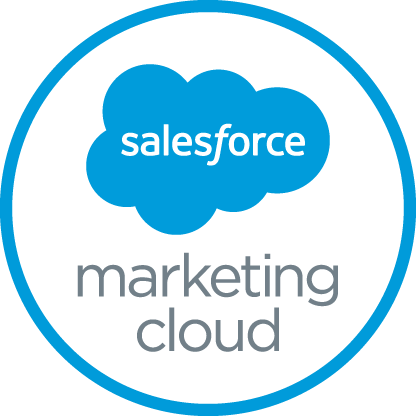
Some email builds were built directly in SFMC while others were pushed via API. Social Studio component too.
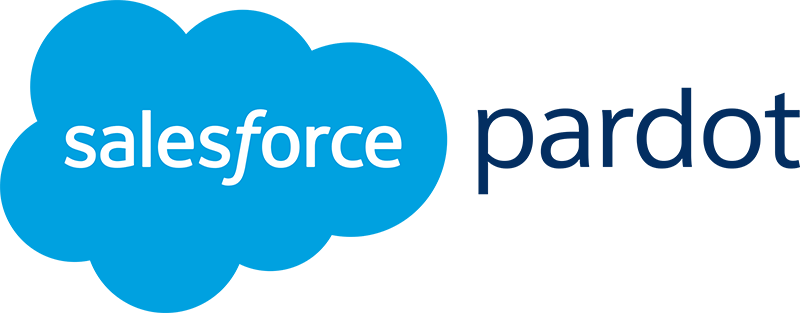
Used mainly for ad hoc email sends and relegated to a small subset of fan communications.

Adobe Experience Platforms powers everything we do from content hosting to reporting and campaign execution.
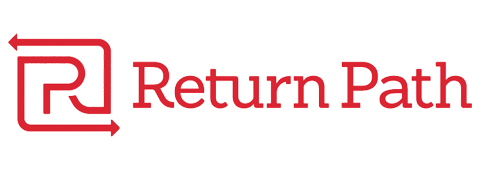
Modal creation for SMS and in-app messaging. Creating, building, and activating modals for mobile comms.

The majority of my workload is spent in Adobe Journey Optimizer building out fan journeys and filtering through data.

Adobe Experience Platforms powers everything we do from content hosting to reporting and campaign execution.

Modal creation for SMS and in-app messaging. Creating, building, and activating modals for mobile comms.

The majority of my workload is spent in Adobe Journey Optimizer building out fan journeys and filtering through data.
